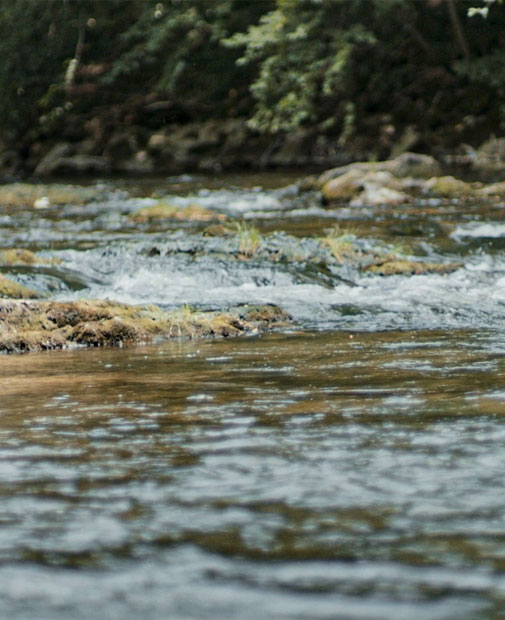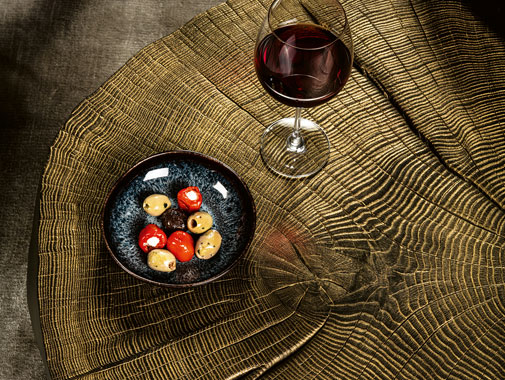Washing
When oak comes into contact with water, unsightly brown stains are often left behind. These are created when moisture penetrates the wood, releasing stored nutrients which are then carried to the surface during evaporation. This leaves a mark. To avoid this, the oak is washed in several steps – an intensive mechanical process developed and perfected over years by wood flooring expert Schotten & Hansen. Washing opens the pores of the wood, allowing undesirable elements to be released and care substances to be added in their place. These can include oils, waxes, resins and – as in the brand-new collection from Janua – colour pigments. This can leave table surfaces, as well as looking radiant in “gold” from the inside out.


This co-creative power demonstrates what is possible when you combine things in ways previously considered impossible.
Most people are familiar with washed wood flooring, but this technique has never been utilised before on a tabletop.
“No one piece of wood is like another,” says Stefan Knopp, “no table is exactly like another. In every step of my surface treatment method I seek to render the characteristic individual
features of the material visible. After the burning of the charring process the washing brings out the structure again. Next I bring out something completely new through contact with the metal pigments so that the material takes on a new dimension.”
#washedoak



Fire and water
In charring and washing we combine the elements of fire and water, which are then united with metal – the element of earth. If you think about the tremendous heat and pressure that are involved in processing metal, you get an idea of the powerful forces of nature that are harnessed and utilised in such a technique.